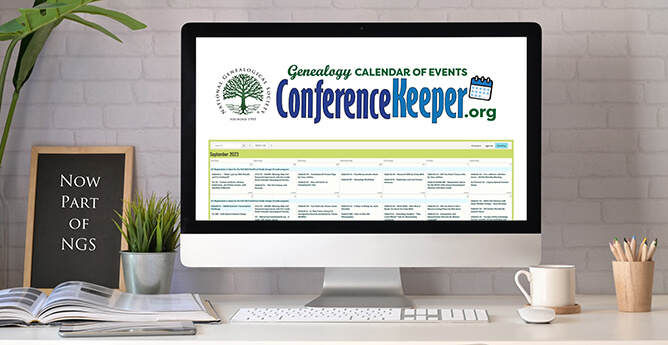The October–December 2023 Issue of NGS Magazine is Now Online
EDITOR'S NOTE by Deb Cyprych
Other markers of identity, such as occupation and economic status, can differentiate people more precisely than names alone. Shannon Green discusses three techniques that can help researchers separate same-named people from each other and merge identities that appear to differ.
A case study with a surprising conclusion demonstrates the necessity of determining places and dates as identity characteristics. During a search for the parents of a man with minimal information, Julia Bagwell zeroed in on dates and places to separate him from others with the same name.
Every genealogist has an ancestress whose unknown maiden name blocks research of her birth family. Ann Lawthers describes a variety of records that may reveal a wife’s maiden name and recommends strategies specific to the search.
Sorting out the identities of African Americans with unrecorded, changed, and differing names requires knowledge of other distinguishing characteristics, particularly their kin. Tony Burroughs explores the complex history of African American naming and the resources that may help with identifying enslaved and free ancestors.
Immigrants often changed their names after arrival. Roslyn Torella investigates the typical reasons for changing names, the ways in which many names were changed, and the tools and resources for discovering the original surnames of immigrants.
Wrapping up the topic of sorting out identities, columnist Kathy Petlewski presents two case studies. One shows how changes in the spelling of a surname over time affect research, and the second recounts the evolution of the given names of eight siblings, including two who changed their first names entirely.
In other articles and columns, Robert Raymond explains the powerful set of tools researchers can adapt to improve outcomes, for searching the seven billion indexed historical records on FamilySearch; Cara Jones covers the value of local historical societies in genealogical research; Paul Woodbury provides instructions for DNA analysis, annotations, and citations; and Carla Cegielski outlines word lists, keyboards, and apps that can assist with translating records.
TABLE OF CONTENTS
Features
- People Are More Than Names: Techniques for Differentiating Identities by Shannon Green, CG
- Names, Dates, and Places: The Foundations of Genealogical Research by Julia M. Bagwell, CG
- Finding the Elusive Maiden Name by Ann G. Lawthers, Sc.D
- The Challenges of Tracing African American Identities by Tony Burroughs, FUGA
- Rediscovering an Immigrant’s Original Surname by Roslyn Torella
- Search Tips and Tricks for FamilySearch by Robert Raymond
Departments
- PRESIDENT'S MESSAGE by Kathryn M. Doyle
- EDITOR'S NOTE by Deb Cyprych
- NEWS
- REFERENCE DESK
- Making Sense of Name Inconsistencies by Kathy Petlewski, MSLS
- SOCIETY FORUM
- The Importance of Local Historical Societies in Genealogical Research by Cara Jones, CG
- DNA DISCOVERY
- DNA Analysis, Annotations, and Citations by Paul Woodbury
- TECH TIPS
- Translation Tools by Carla S. Cegielski



